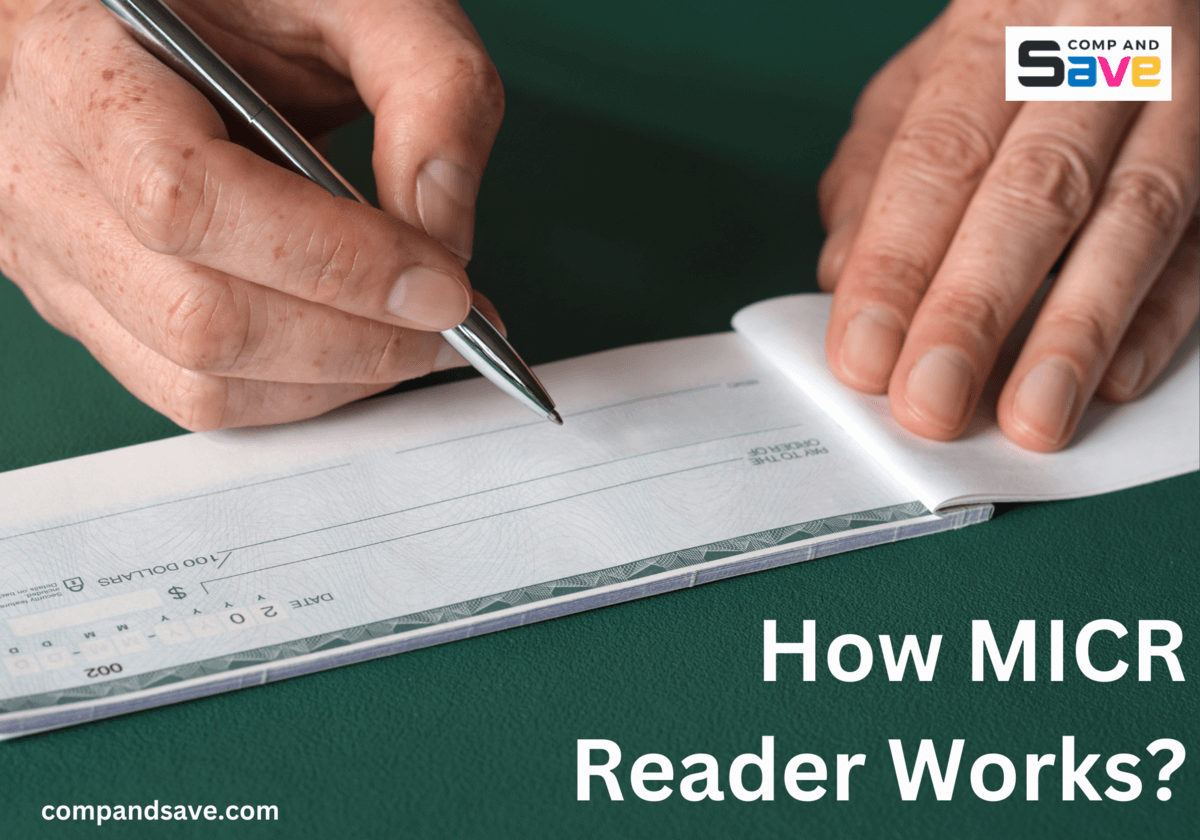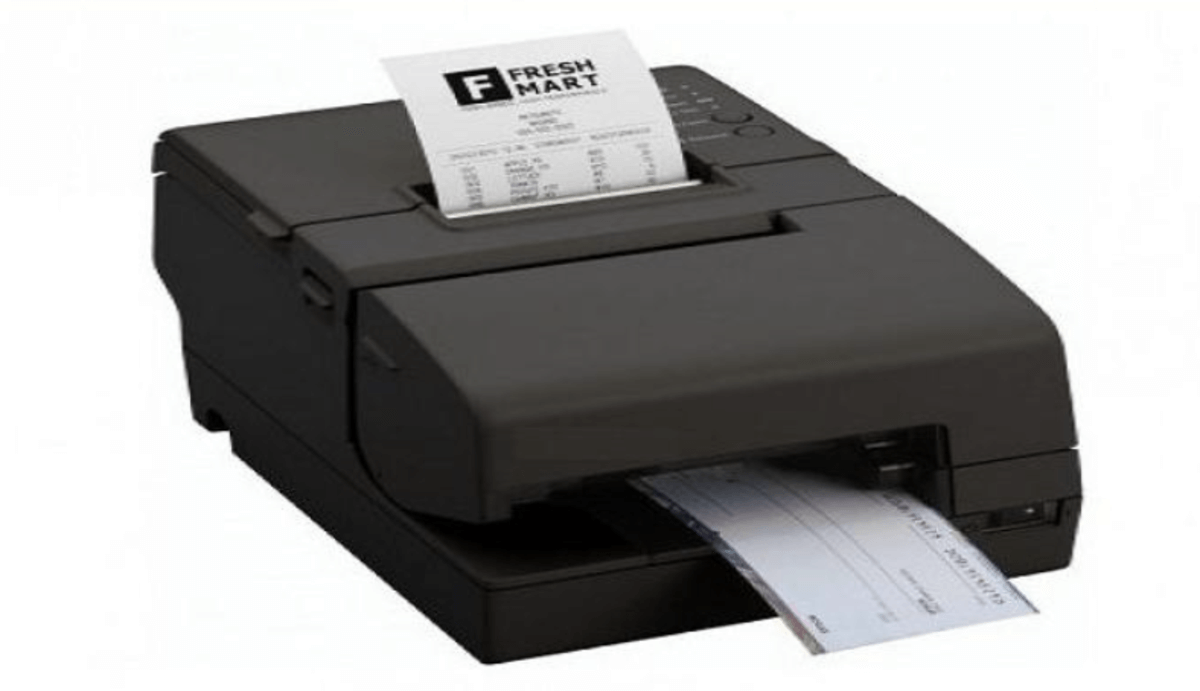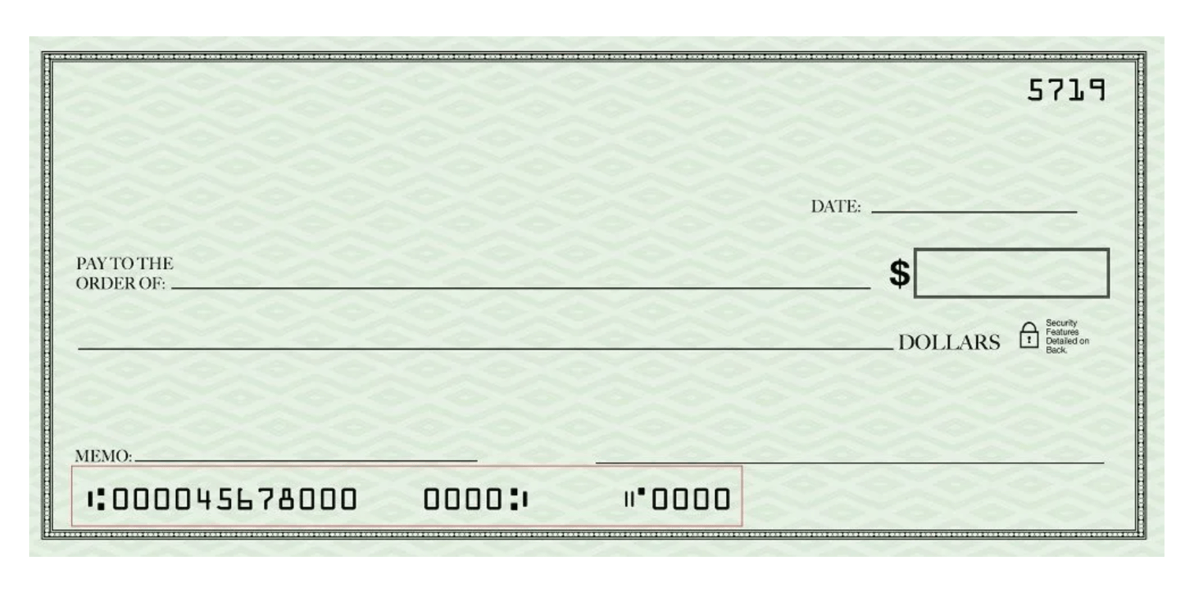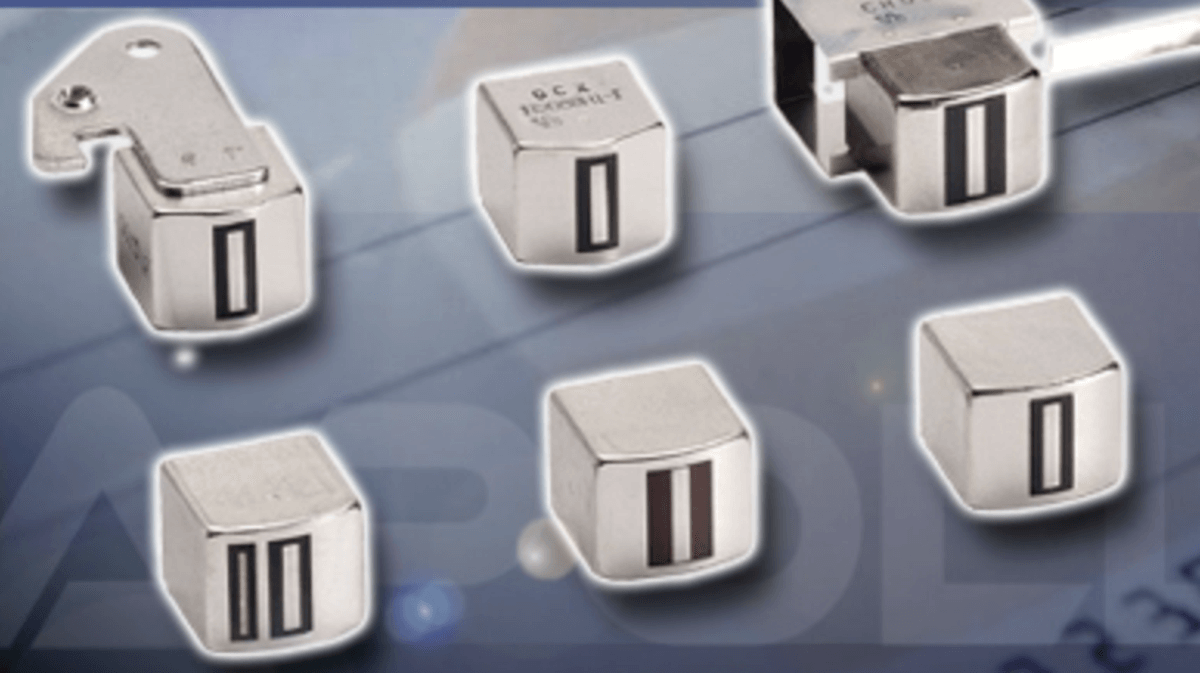MICR Readers: How It Reads Magnetic Ink Characters?
| Apr 02, 2024Do you ever wonder how banks process your checks so quickly and accurately? Well, the secret lies in a fascinating technology called Magnetic Ink Character Recognition, or MICR for short. But how are they read? Let’s find out in this guide how they use MICR readers to scan and interpret the magnetic ink characters on checks. Whether you’re just curious and seeking to learn more about banking technology or a professional looking to enhance your knowledge of MICR, this guide will give you insights into MICR technology. So, let’s dive in and learn how a magnetic ink character reader works!
In this guide, we will discuss:
- Magnetic Ink Characters: What Are These?
- Magnetic Ink Character Recognition Reader: Advantages
- Magnetic Ink Character Reader: Exploring 4 Types
- MICR Readers: How Do They Work?
Magnetic Ink Characters: What Are These?
Magnetic ink characters are special characters printed using magnetic ink or what we call a MICR toner. They are typically found at the bottom of checks and other financial documents. They contain essential information such as routing numbers, account numbers, and check numbers. These characters are designed to be easily readable by machines called MICR readers, which use magnetic sensors to interpret the information encoded in the characters.
(Source: Digital Check)
Checks have numbers written in two unique fonts: E-13B and CMC-7. E-13B is more common in North America, Australia, and the United Kingdom, while CMC-7 is used more in Europe and parts of South America. These styles help machines quickly and accurately read check numbers.
Magnetic Ink Character Recognition Reader: Advantages
Magnetic Ink Character Recognition readers are handy devices used in banks and businesses to quickly and accurately process checks and other important documents. But what makes them so useful? Let’s explore some reasons why:
1. High Accuracy
MICR Readers are great at reading special magnetic ink, like the one used in the HP 79A MICR toner cartridge for printing checks. This means they make very few mistakes when reading the numbers and letters on checks.
2. Fast Processing
They can go through lots of checks quickly. This helps banks and other places that deal with a lot of checks every day.
3. Compatibility
(Source: Open PR)
MICR device can read different kinds of documents, not just checks. This includes deposit slips, payment vouchers, and other types of financial instruments that also use MICR encoding. So, they’re helpful for various financial papers that use the same magnetic ink.
4. Durability
MICR Readers are built to endure frequent use and tough environmental conditions, ensuring they remain reliable over the long term, especially in demanding environments.
Magnetic Ink Character Reader: Exploring 4 Types
Different kinds of MICR readers are designed to fit different business needs and hold different amounts of checks. They make it easier for businesses to read magnetic ink characters on checks quickly and accurately. Let’s take a look at each type:
1. Magnetic Stripe Readers
Magnetic stripe readers are machines that can read the stripe on the back of cards like credit cards or the bottom of MICR checks. They work by sensing the magnetized bits on the stripe. This magnetic ink character reader is common and not too expensive. They’re used in places where you swipe cards, like stores or ATMs. Banks also use them to process checks quickly. The problem is that the stripe can get damaged easily, causing errors when reading. Also, they need regular cleaning and maintenance to work well.
2. Scanning Readers
This type of scanner uses special technology to read all parts of a check, including the MICR line, and change it into digital information. These machines are better at accuracy compared to ones that read magnetic stripes. They can even read checks that are damaged or have poor print quality. But, these scanning machines are pricier than the magnetic stripe and need more computer power to work.
3. Hybrid Readers
Hybrid readers are like a mix of two types of readers: magnetic stripe and scanning. They can understand both the magnetic stripe and the MICR line on a check. They’re good at reading checks and usually cost less than scanners. But they can also get damaged and might not read damaged checks.
4. Portable Readers
Portable readers are compact devices you can take wherever you go. They’re handy for businesses needing to read outside checks, such as delivery companies. You can easily connect them to phones or laptops. However, they can be more expensive than other options and might not be as effective at reading checks as larger machines.
MICR Readers: How Do They Work?
Now that we understand why MICR readers are important and some types available in the market, let’s learn how they read and understand the special characters printed with magnetic ink on checks. Here’s how they do it:
1. Magnetic Ink
MICR characters are printed using a MICR toner which contains iron oxide particles. This ink is resistant to tampering and fading, making it ideal for check printing.
2. Printing Process
(Source: CFI)
When a check is printed, essential details like the bank’s routing number, account number, and check number are printed at the bottom called the MICR line. This line is printed with magnetic ink, which helps machines read it easily. It’s like a special code that tells banks where the money should go and where it’s coming from.
3. Magnetic Reading
(Source: Apollo Electronics)
A magnetic character reader has special sensors or magnetic heads that can detect the magnetic ink characters on checks. These sensors scan the characters as the check moves through the reader.
4. Character Recognition
The MICR check scanner reads the magnetic signals and changes them into digital information. Each symbol has its own unique magnetic pattern, so the machine can tell which symbol is which. This helps it read the characters on the check correctly.
5. Data Processing
Once the characters are recognized, the MICR reader organizes the information based on the bank’s needs. This might mean checking if the routing number matches what’s in the bank’s database, making sure the account number looks right, and doing other checks to ensure everything is correct and valid. This helps ensure the information is accurate and trustworthy before the bank does anything.
6. Transaction Processing
Once the information is processed, it can be used for banking transactions like depositing a check, withdrawing funds, or transferring money between accounts. The MICR data is usually combined with other details on the check to finish the task safely and quickly. MICR readers do this job fast and with fewer mistakes than people typing it in by hand.
Parting Words
So, why are MICR readers important in banking? Well, they help make things faster and more accurate. A magnetic ink character reader reads magnetic ink on checks and other important documents, helping banks process transactions quickly and avoid mistakes. Though there are different kinds of MICR readers out there, they all do the same basic job: making sure banking runs smoothly and efficiently.
Key takeaways:
- MICR readers help banks read all the important information on checks really fast. This helps banks process transactions smoothly and without making mistakes.
- The numbers and symbols at the bottom of checks are printed using magnetic ink that stays the same and doesn’t fade over time. This ensures that the machines can always read them properly.
- MICR readers have special sensors to “see” the special ink on checks. They then turn what they see into digital information that computers can understand and work with.
Frequently Asked Questions
1. Are MICR readers compatible with all types of magnetic ink characters?
Yes, MICR readers can usually understand all types of magnetic ink characters found on checks and financial papers. They’re made to read the important details like routing numbers and account numbers, no matter which style of magnetic ink characters are used. Whether it’s the E-13B font seen in North America, Australia, and the United Kingdom, or the CMC-7 font more common in Europe and parts of South America, MICR readers can handle both. They work by sensing the MICR toner to figure out the information written on the check. Just make sure the MICR reader is set up right and taken care of to work well with different types of magnetic ink characters.
2. How accurate are MICR readers in decoding magnetic ink characters?
MICR readers are designed to read characters on checks with very few mistakes. Whether it’s routing numbers, account numbers, or check numbers, they usually get it right. These machines rely on magnetic sensors to pick up the details encoded in the magnetic ink, so they’re reliable. But, like with any technology, there can be occasional errors, especially if the ink is smudged or the machine isn’t maintained properly. Overall, the magnetic ink scanner is known for its accuracy in decoding magnetic ink characters.
3. Do we still need MICR technology when we can pay digitally?
Yes, MICR technology is still important even though digital payments are popular now. Checks are still used everywhere, like businesses and for paying bills. MICR helps make sure checks are processed correctly and securely. It’s like a safety net for handling paper checks, making sure everything goes smoothly. So, even with digital options, MICR technology remains valuable in managing paper-based payments.
Related Articles:
MICR Toner: Know How It Differs From Regular Toners




